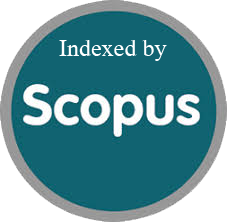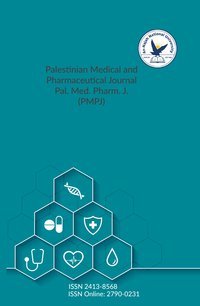Chemical Composition, Antioxidant Activity, and In Silico Pharmacokinetics of Essential Oils from Four Ocimum basilicum Cultivars in Iraq
Article info
2025-02-24
2025-06-15
2025-08-20
None - None
Keywords
- Antioxidant
- ADME
- Ocimum
- DPPH
- assay;
- properties;
- oils;
- basilicum
- Molecular
- docking;
- activity;
- Essential
Abstract
Basil (Ocimum basilicum) is acknowledged for its vast medicinal properties, primarily due to antioxidant-rich essential oils. While these oils exhibit diverse therapeutic properties, comparative studies on chemical profiles, antioxidant activities, and pharmacokinetics across different basil cultivars remain limited. This study intended to identify the chemical constituents, antioxidant potential, and in silico pharmacokinetic and toxicity profiles of essential oils extracted from four distinct Ocimum basilicum cultivars: cinnamon, purple, green, and citriodorum. The main goal was to evaluate their therapeutic potential, focusing on antioxidant activity and their suitability for pharmaceutical applications. Essential oils were obtained from the fresh leaves of each Basil cultivar using steam distillation. Gas Chromatography-Mass spectrometry technique (GC-MS) was used to establish the chemical composition of these oils. The antioxidant potential of the Basil oils was assessed using the 2,2-Diphenyl-1-picrylhydrazyl (DPPH) assay. Molecular docking studies investigated the interaction of Basil oils’ key components with the human antioxidant enzyme peroxiredoxin 5 (Prx5). Finally, in silico studies evaluated the identified compounds' pharmacokinetic and toxicity properties. GC-Mass analysis results showed 38 volatiles were identified across cultivars, with Cinnamon basil showed to possess the highest constituent diversity and antioxidant activity (96.67% inhibition), while molecular docking showed that key compounds such as Phytol exhibited the highest binding affinity at -5.4440 kcal/mol, surpassing Cedrelanol at -4.9524 kcal/mol and cis-β-farnesene at -4.7075 kcal/mol, which is consistent with experimental findings on antioxidants. The ADME analysis indicated that both phytol and Cedrelanol have the potential for good absorption in the gut and can penetrate the blood-brain barrier. Although these compounds are generally categorized as low-risk (Class IV), phytol (51%) and Cedrelanol (76%) raised concerns regarding potential carcinogenicity, while fenchone (50%) and humulene (69%) presented risks for immunotoxicity. This study demonstrates the significant antioxidant potential and favourable pharmacokinetic profiles of Ocimum basilicum oils, particularly cinnamon basil. These findings highlight the potential of cinnamon basil essential oils as novel sources for antioxidant therapies and nutraceuticals, particularly in diseases linked to oxidative stress. In addition to therapeutic potential, the strong antioxidant properties also support their application in food preservation and pharmaceutical formulations. In vivo studies are needed to validate their efficacy, conduct safety evaluations—especially regarding potential carcinogenicity and immunotoxicity—and to assess the synergistic effects of these compounds in multi-compound formulations aimed at enhancing therapeutic outcomes.
Al-Anssari, R. A., Ali, A. H., & Al-Saad, O. A. (2025). Chemical Composition, Antioxidant Activity, and In Silico Pharmacokinetics of Essential Oils from Four Ocimum basilicum Cultivars in Iraq. Palestinian Medical and Pharmaceutical Journal, 11(4). https://doi.org/10.59049/2790-0231.11.4.2572
[1]R. A. Al-Anssari, A. H. Ali, and O. A. Al-Saad, “Chemical Composition, Antioxidant Activity, and In Silico Pharmacokinetics of Essential Oils from Four Ocimum basilicum Cultivars in Iraq,” Palestinian Medical and Pharmaceutical Journal, vol. 11, no. 4, Aug. 2025, doi: 10.59049/2790-0231.11.4.2572.
Al-Anssari, Reham A., et al. “Chemical Composition, Antioxidant Activity, and In Silico Pharmacokinetics of Essential Oils from Four Ocimum Basilicum Cultivars in Iraq.” Palestinian Medical and Pharmaceutical Journal, vol. 11, no. 4, Aug. 2025. Crossref, https://doi.org/10.59049/2790-0231.11.4.2572.
1.Al-Anssari RA, Ali AH, Al-Saad OA. Chemical Composition, Antioxidant Activity, and In Silico Pharmacokinetics of Essential Oils from Four Ocimum basilicum Cultivars in Iraq. Palestinian Medical and Pharmaceutical Journal [Internet]. 2025 Aug;11(4). Available from: http://dx.doi.org/10.59049/2790-0231.11.4.2572
Al-Anssari, Reham A., Anwar H. Ali, and Ola Adel Al-Saad. “Chemical Composition, Antioxidant Activity, and In Silico Pharmacokinetics of Essential Oils from Four Ocimum Basilicum Cultivars in Iraq.” Palestinian Medical and Pharmaceutical Journal 11, no. 4 (August 2025). https://doi.org/10.59049/2790-0231.11.4.2572.
Chemical Composition, Antioxidant Activity, and In Silico Pharmacokinetics of Essential Oils from Four Ocimum basilicum Cultivars in Iraq
المؤلفون:
معلومات المقال
2025-02-24
2025-06-15
2025-08-20
None - None
الكلمات الإفتتاحية
- Antioxidant
- ADME
- Ocimum
- DPPH
- assay;
- properties;
- oils;
- basilicum
- Molecular
- docking;
- activity;
- Essential
الملخص
Basil (Ocimum basilicum) is acknowledged for its vast medicinal properties, primarily due to antioxidant-rich essential oils. While these oils exhibit diverse therapeutic properties, comparative studies on chemical profiles, antioxidant activities, and pharmacokinetics across different basil cultivars remain limited. This study intended to identify the chemical constituents, antioxidant potential, and in silico pharmacokinetic and toxicity profiles of essential oils extracted from four distinct Ocimum basilicum cultivars: cinnamon, purple, green, and citriodorum. The main goal was to evaluate their therapeutic potential, focusing on antioxidant activity and their suitability for pharmaceutical applications. Essential oils were obtained from the fresh leaves of each Basil cultivar using steam distillation. Gas Chromatography-Mass spectrometry technique (GC-MS) was used to establish the chemical composition of these oils. The antioxidant potential of the Basil oils was assessed using the 2,2-Diphenyl-1-picrylhydrazyl (DPPH) assay. Molecular docking studies investigated the interaction of Basil oils’ key components with the human antioxidant enzyme peroxiredoxin 5 (Prx5). Finally, in silico studies evaluated the identified compounds' pharmacokinetic and toxicity properties. GC-Mass analysis results showed 38 volatiles were identified across cultivars, with Cinnamon basil showed to possess the highest constituent diversity and antioxidant activity (96.67% inhibition), while molecular docking showed that key compounds such as Phytol exhibited the highest binding affinity at -5.4440 kcal/mol, surpassing Cedrelanol at -4.9524 kcal/mol and cis-β-farnesene at -4.7075 kcal/mol, which is consistent with experimental findings on antioxidants. The ADME analysis indicated that both phytol and Cedrelanol have the potential for good absorption in the gut and can penetrate the blood-brain barrier. Although these compounds are generally categorized as low-risk (Class IV), phytol (51%) and Cedrelanol (76%) raised concerns regarding potential carcinogenicity, while fenchone (50%) and humulene (69%) presented risks for immunotoxicity. This study demonstrates the significant antioxidant potential and favourable pharmacokinetic profiles of Ocimum basilicum oils, particularly cinnamon basil. These findings highlight the potential of cinnamon basil essential oils as novel sources for antioxidant therapies and nutraceuticals, particularly in diseases linked to oxidative stress. In addition to therapeutic potential, the strong antioxidant properties also support their application in food preservation and pharmaceutical formulations. In vivo studies are needed to validate their efficacy, conduct safety evaluations—especially regarding potential carcinogenicity and immunotoxicity—and to assess the synergistic effects of these compounds in multi-compound formulations aimed at enhancing therapeutic outcomes.
Al-Anssari, R. A., Ali, A. H., & Al-Saad, O. A. (2025). Chemical Composition, Antioxidant Activity, and In Silico Pharmacokinetics of Essential Oils from Four Ocimum basilicum Cultivars in Iraq. Palestinian Medical and Pharmaceutical Journal, 11(4). https://doi.org/10.59049/2790-0231.11.4.2572
[1]R. A. Al-Anssari, A. H. Ali, and O. A. Al-Saad, “Chemical Composition, Antioxidant Activity, and In Silico Pharmacokinetics of Essential Oils from Four Ocimum basilicum Cultivars in Iraq,” Palestinian Medical and Pharmaceutical Journal, vol. 11, no. 4, Aug. 2025, doi: 10.59049/2790-0231.11.4.2572.
Al-Anssari, Reham A., et al. “Chemical Composition, Antioxidant Activity, and In Silico Pharmacokinetics of Essential Oils from Four Ocimum Basilicum Cultivars in Iraq.” Palestinian Medical and Pharmaceutical Journal, vol. 11, no. 4, Aug. 2025. Crossref, https://doi.org/10.59049/2790-0231.11.4.2572.
1.Al-Anssari RA, Ali AH, Al-Saad OA. Chemical Composition, Antioxidant Activity, and In Silico Pharmacokinetics of Essential Oils from Four Ocimum basilicum Cultivars in Iraq. Palestinian Medical and Pharmaceutical Journal [Internet]. 2025 Aug;11(4). Available from: http://dx.doi.org/10.59049/2790-0231.11.4.2572
Al-Anssari, Reham A., Anwar H. Ali, and Ola Adel Al-Saad. “Chemical Composition, Antioxidant Activity, and In Silico Pharmacokinetics of Essential Oils from Four Ocimum Basilicum Cultivars in Iraq.” Palestinian Medical and Pharmaceutical Journal 11, no. 4 (August 2025). https://doi.org/10.59049/2790-0231.11.4.2572.

Since 2022
Cite Score (Scopus): 0.8
Time to First Decision: 3 Days
Submission to Acceptance: 45 Days
Acceptance to Publication: 64 Days
Acceptance Rate: 17%
Why should you
Publish With Us?
An-Najah National University
Nablus, Palestine
Nablus, Palestine
- P.O. Box
- 7, 707
- Fax
- (970)(9)2345982
- Tel.
- (970)(9)2345560
- (970)(9)2345113/5/6/7-Ext. 2628
- [email protected]
- EIC
- Prof. Waleed Sweileh
The Palestinian Medical and Pharmaceutical Journal (Pal. Med. Pharm. J.) © 2024 by An-Najah University, Nablus, Palestine is licensed under CC BY-NC 4.0
News and Views
